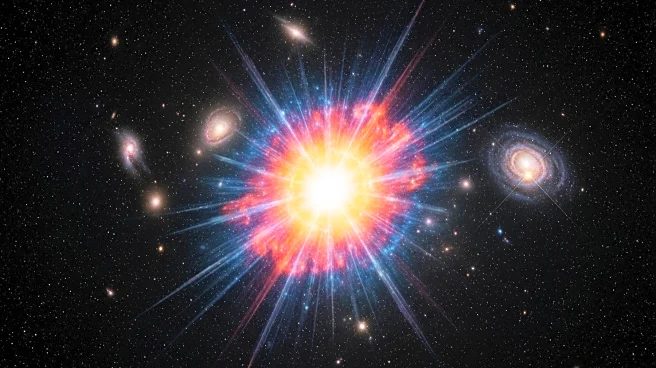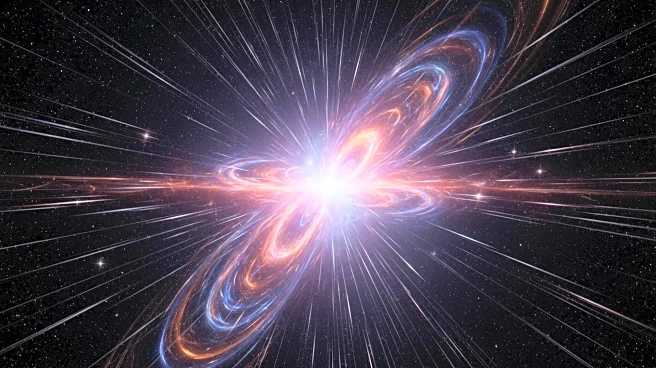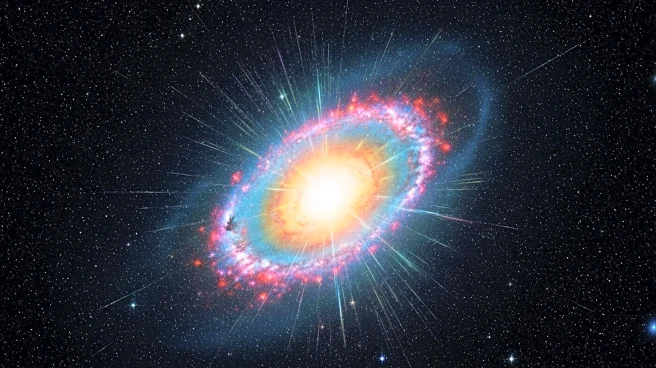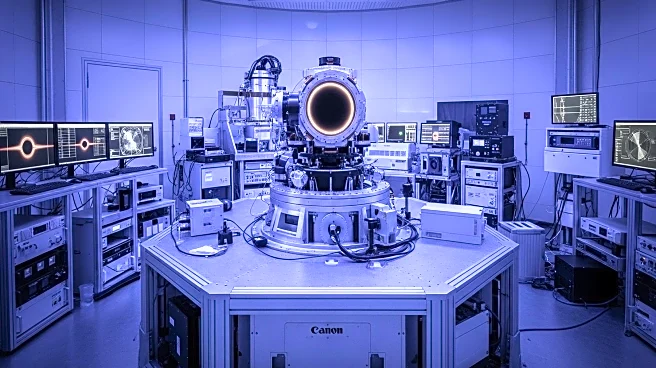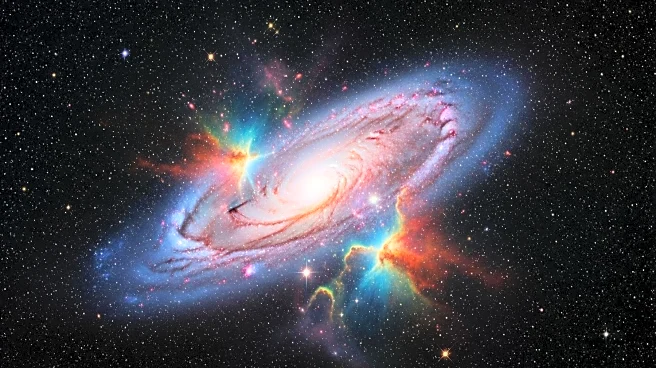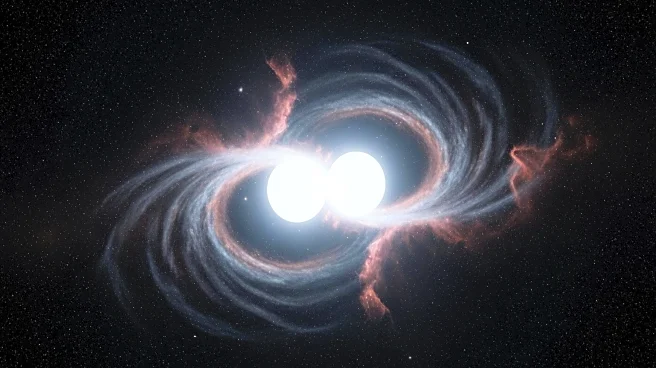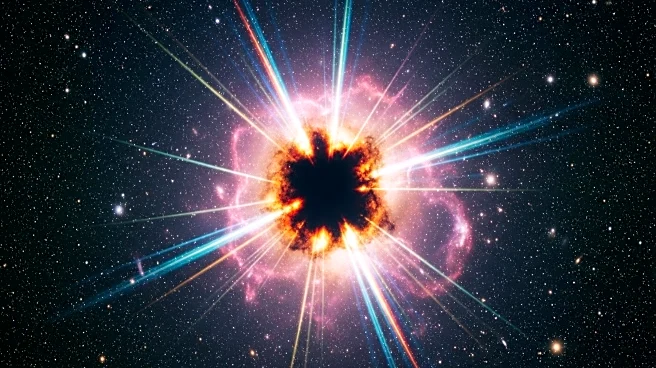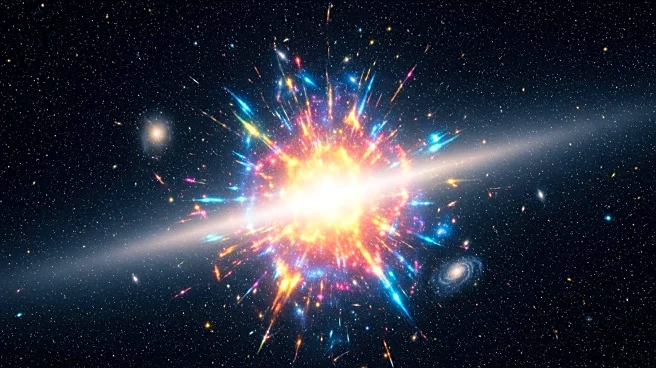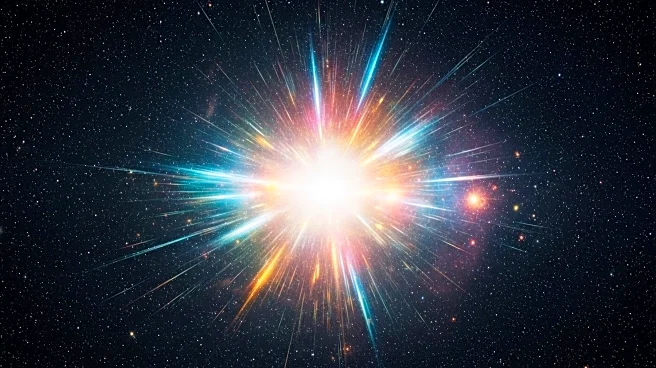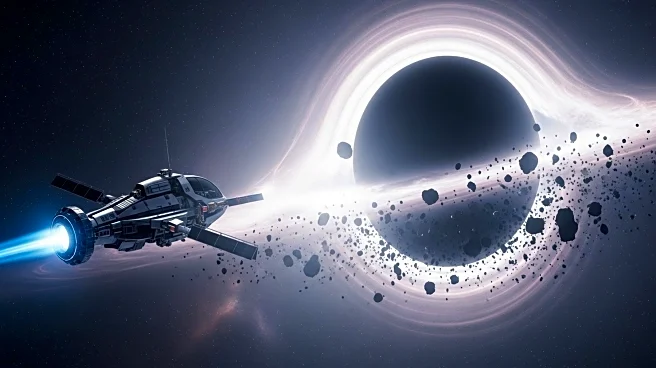What's Happening?
Astronomers have observed a gamma-ray burst (GRB) that defies existing models of cosmic explosions. Designated GRB 250702B, this event lasted about a day, significantly longer than typical GRBs, which usually last milliseconds to minutes. The burst also exhibited repeated activity, a phenomenon never before seen in GRBs. Detected by NASA's Fermi gamma-ray telescope, the burst's unusual characteristics have prompted researchers to explore new theories, including the possibility of a tidal disruption event involving an intermediate mass black hole.
Why It's Important?
This discovery challenges current understanding of gamma-ray bursts, which are among the most powerful explosions in the universe. The event's unique properties could lead to new insights into the mechanisms behind these cosmic phenomena. Understanding GRBs is crucial for astrophysics, as they provide information about the universe's most energetic processes. The findings may also have implications for the study of black holes and the conditions that lead to such extraordinary events.
What's Next?
Researchers aim to determine the distance to the galaxy that produced GRB 250702B to calculate its exact brightness and energy release. This will help narrow down the possible causes of the burst. Continued observations and analysis are expected to provide further insights into the nature of this unusual event and its implications for astrophysical theories.
